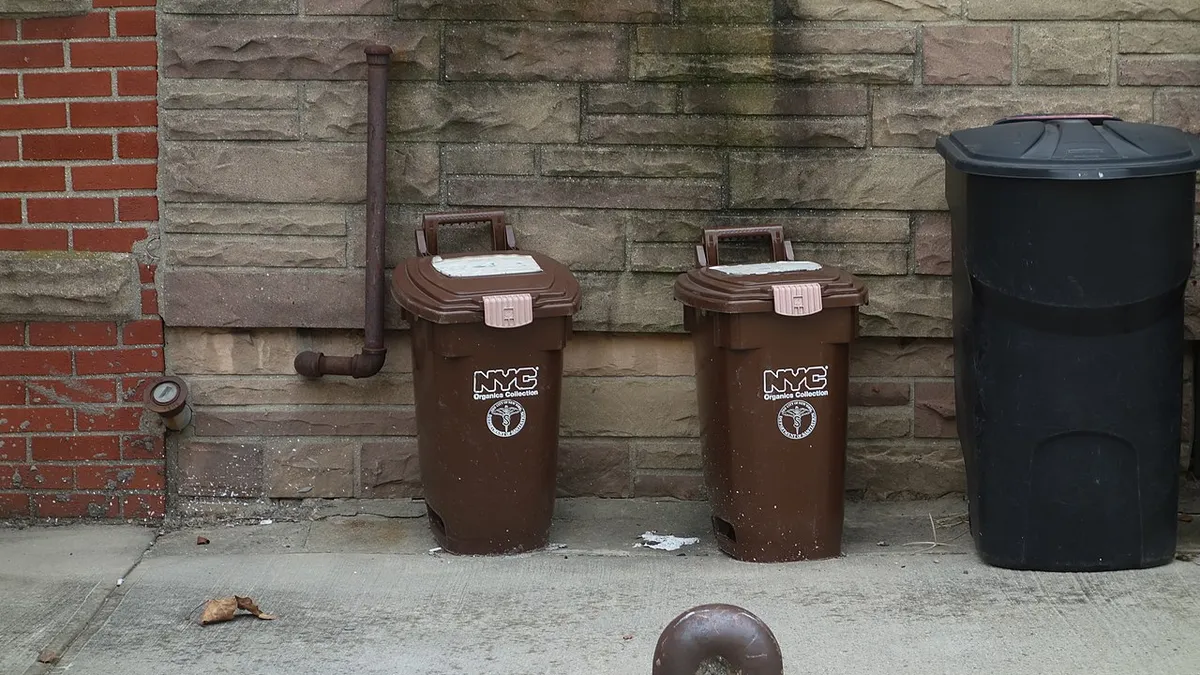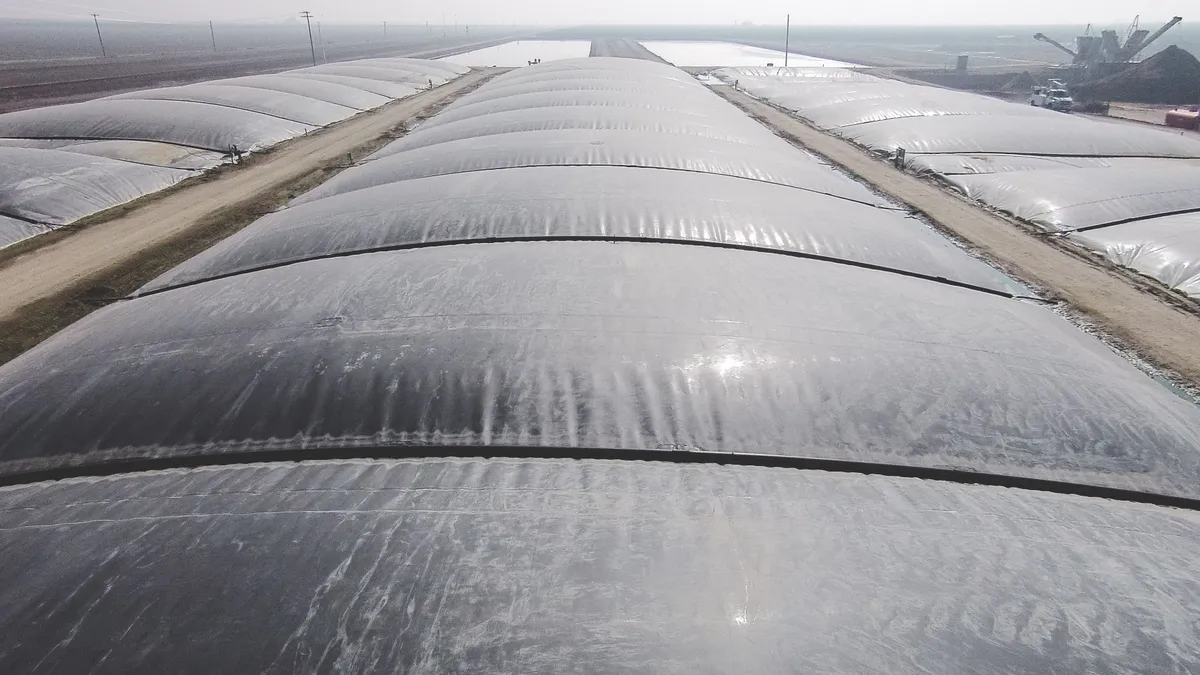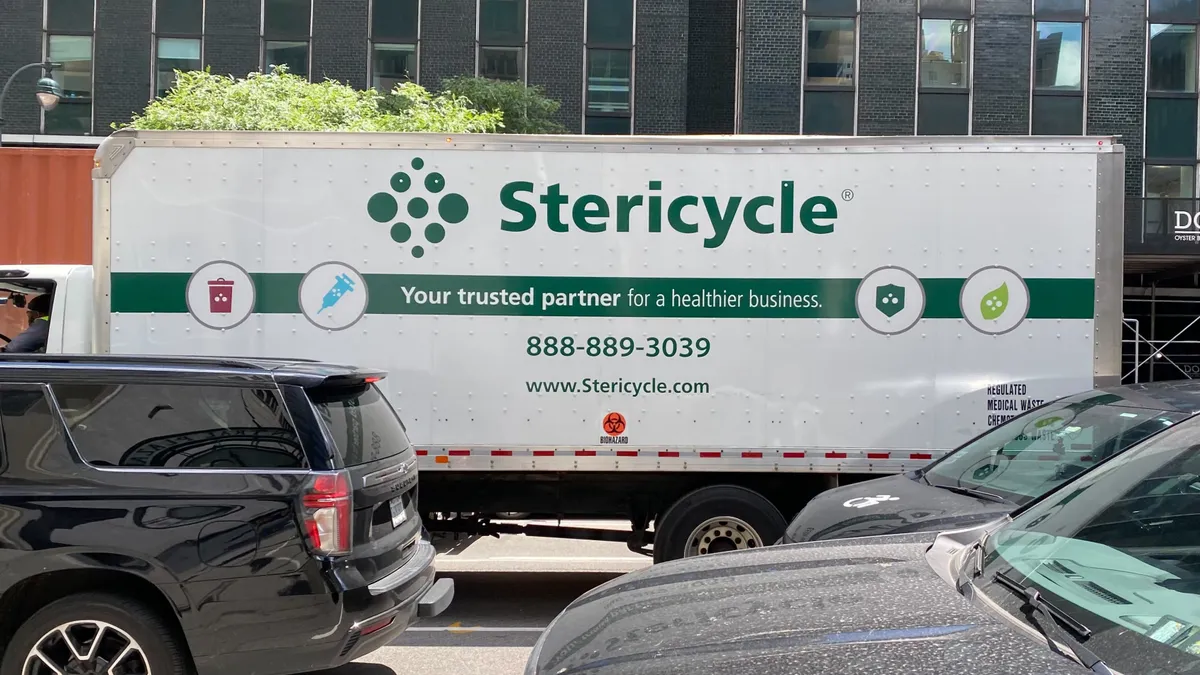Residents of Manhattan, the Bronx and Staten Island are expected to begin separating their food waste into a separate bin from their trash and recycling as the New York City Department of Sanitation begins curbside organics collection. The change, effective Sunday, marks the final expansion of the nation’s largest residential curbside organics program.
The rollout comes after service already began in Queens and Brooklyn, the two other boroughs of the city, last fall. To manage the program for a city with a population of more than 8.3 million people, DSNY hired an additional 320 workers and will spend an additional $20.3 million to implement an organics program in all five boroughs, the agency confirmed via email.
The citywide change builds on years of on-again, off-again pilot programs to collect organics. The agency is meeting a deadline set by the New York City Council in a bill passed last year, though the Adams administration has said it would have followed a similar timeline without the bill. The shift also comes amid broader scrutiny of the way the city manages its waste, including calls for increased support for local composting efforts.
“The idea was to redesign the program to be as similar as possible to the other free, unlimited services we provide around recycling and around refuse and to make it simple,” Josh Goodman, deputy commissioner of public affairs and customer experience at DSNY, said.
New York City collected nearly 130,000 tons of organic material in fiscal year 2024, which ended on June 30. That’s a more than 23% increase over the prior year, and included material collected from Brooklyn and Queens’ curbside program, according to the recently released annual Mayor’s Management Report.
The city has also been working to expand its capacity to process those organics. In January, Mayor Eric Adams and other city officials announced an expansion of the city-owned Staten Island Composting Facility that would increase its processing capacity by nearly 2,000%. The city also recently awarded contracts to three companies — WM, Denali Water Solutions and American Recycling — to provide additional organics processing capacity.
Those combined efforts will likely shift the ratio of organics sent for anaerobic digestion versus composting.
Earlier this year, Goodman told New York City Council members that roughly 80% of the city’s organics were being sent to digestion, leading to criticism that the city’s organics bins were misleadingly labeled “compost.” DSNY, directed by Adams to institute a 5% budget cut in November, also ended its financial support for community composters citywide, leading to protests and an eventual restoration of funding through a separate council budget. The city’s parks department has also evicted a longtime composter, Big Reuse, from its site in Queens, reportedly so the agency can make changes to its park.
With the new organics processing contracts, roughly a third of New York City’s organics will be composted, Goodman said. He said the destination of collected organic material is roughly determined by community district, a political subdivision of the city’s boroughs.
Until this week, organics from 25 community districts ended up at the Newtown Creek Wastewater Treatment Plant, where the material was being codigested as a slurry. With the citywide rollout of the organics collection program, 12 community districts will now send their material to Newtown Creek. The city will also continue to use other facilities to process organics, including a digester in Massachusetts and composting facility in New Jersey, Goodman said.
The city will likely have some kinks to work out as the program expands. DSNY had to redesign its collection routes to pick up the organics and added an additional 158 trucks to its fleet. The companies that received organics processing contracts must now implement their requirements. And residents must now get in compliance after DSNY performed a multimillion-dollar outreach campaign.
New York City’s existing recycling service for metals, glass and plastics hasn’t been perfect either over the years, achieving a diversion rate of 20.6% in FY 2024. But Goodman said the agency expects organics recycling, like traditional recycling programs, can be improved year over year.
“We are doing everything we can to educate people now about it. And I'll say that commitment is not going away,” Goodman said. “We're hopeful, and have reason to believe that we're going to continue to see those numbers increase.”
New York City is currently in a warning period for residents to begin separating their food scraps, but fines will begin after spring of next year, per a city website. Fines for buildings with one to eight units go from $25 per first offence to $50 per second offence, to $100 per third and all subsequent offences. Larger buildings face fines that go from $100 to $200 to $300 for each repeat offence.



















